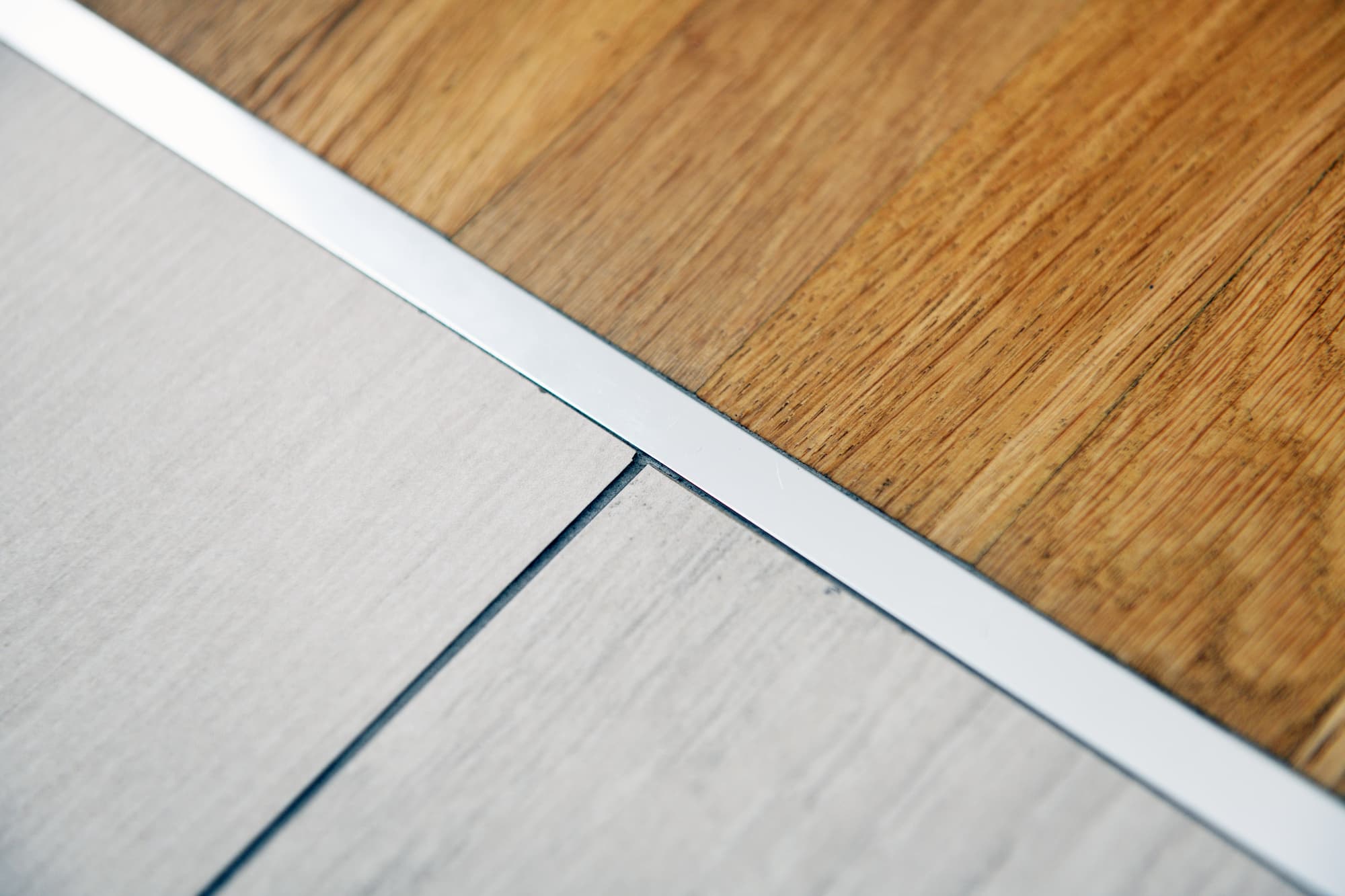Introduction
Walk from one room to the next, and you’ll probably feel it; that small, almost invisible shift beneath your feet. The kitchen’s tile cools your step, then suddenly the oak floor feels warm and familiar. Or maybe a soft carpet catches you after the smooth slide of vinyl. That isn’t luck or design flair alone. That’s a hardwood flooring transition doing quiet, careful work.
These slim connectors rarely get attention, yet they hold the look and function of an entire space together. They keep heights level, protect edges, and let rooms flow like they belong to the same home. Without them, things start to unravel. Seams lift, corners fray, and the design feels slightly off, even if you can’t quite say why.
What Are Flooring Transitions?
Think of flooring transitions as bridges. They link two floors that don’t quite match — maybe a stone kitchen meets a wood hallway, or plush carpet borders a tiled entryway. They make those joins feel intentional instead of improvised.
Transitions come in many materials and shapes: brushed metal that glints softly against stone, stained wood that melts into oak, or flexible vinyl that hides the edge of a carpet. Each type serves a purpose, and choosing the right one depends on where and how it’s used.
Here are a few common options:
- T-Molding: Connects two floors of equal height, like laminate to laminate.
- Reducers: Smooth the change between uneven heights like when tile meets vinyl.
- Thresholds: Create a neat, functional break at doorways.
- End Caps: Finish flooring edges near sliding doors or hearths.
- Stair Nosing: Strengthens and finishes stair treads for better grip and longer wear.
They may look simple, but any good installer will tell you these tiny details take precision, patience, and an eye for alignment.
Why Flooring Transitions Matter More Than You Think
If you’ve ever tripped on a raised edge or seen a carpet unravel where it meets hardwood, you already know how much transitions matter.
1. They Keep Every Step Steady
You shouldn’t have to think about walking from one surface to another. A proper transition makes sure of that. It levels height differences, hides hard edges, and stops your shoe from catching. In busy homes where kids run, pets dart, or guests wander barefoot, that tiny piece becomes a quiet safeguard.
2. They Protect the Edges That Take the Hits
Edges are the first to wear out. Chairs scrape them, vacuums clip them, and dirt collects there. Without protection, corners chip, seams peel, or threads pull loose. A thin transition strip absorbs the damage so your floors stay beautiful longer.
3. They Let Floors Move Naturally
Wood and laminate breathe. In summer, they expand. and alternatively, in winter, they contract. Without room to shift, planks warp or buckle. Transitions hide that flexible space beneath them, letting floors move as they should — silent, steady, and crack-free.
4. They Make the Design Feel Thoughtful
A room should feel connected, not divided. Transitions can quietly shape that feeling. A brushed metal edge can highlight a modern kitchen, while a wood-toned threshold blends a cozy hallway into a tiled mudroom. When chosen carefully, these pieces make every step flow like it was planned all along.
5. They Reveal True Craftsmanship
Laying a floor takes skill, but finishing it cleanly takes mastery. A perfect transition sits flush without any raised edge, visible glue or squeak underfoot. It’s the kind of precision that separates a job done quick from one done right.
Choosing the Right Transition for Your Floors
This choice isn’t purely about looks. It’s about how the materials behave. Wood and tile meet differently than carpet and laminate. Moisture, foot traffic, and even air temperature change what’s needed.
For bathrooms or kitchens, go with water-resistant materials that won’t swell or stain. Entryways do best with tough vinyl or aluminum, built to take scuffs. And if you’re joining two wood floors, pick a molding that matches both color and grain so the eye moves naturally from one to the other.
The fit itself matters just as much. Installers measure for humidity, height, and spacing. The strip should sit firm but not tight, leaving enough give for seasonal shifts. When that’s done right, you stop noticing it. And that’s the whole point.
A Quick Look: Common Transition Types
| Transition Type | Best For | Material Options |
| T-Molding | Equal height floors | Wood, laminate |
| Reducer | Slight height change | Vinyl, metal |
| Threshold | Doorways | Wood, marble |
| End Cap | Finished exposed edges | Laminate, wood |
| Stair Nosing | Stair Edges | Wood, aluminum |
Conclusion
Hardwood flooring transitions might not sparkle or stand out, but they define how your home feels underfoot. They protect edges, smooth out surfaces, and make one room flow into the next without you ever thinking about it.
Skip them, and your floors start to tell on you. The gaps widen, seams pull, and the finish never feels quite right. Include them, and every room connects naturally, like one continuous thought.
Good flooring isn’t just about the boards or tiles. It’s about the spaces between them, and how seamlessly they come together. That’s where real craftsmanship lives.




